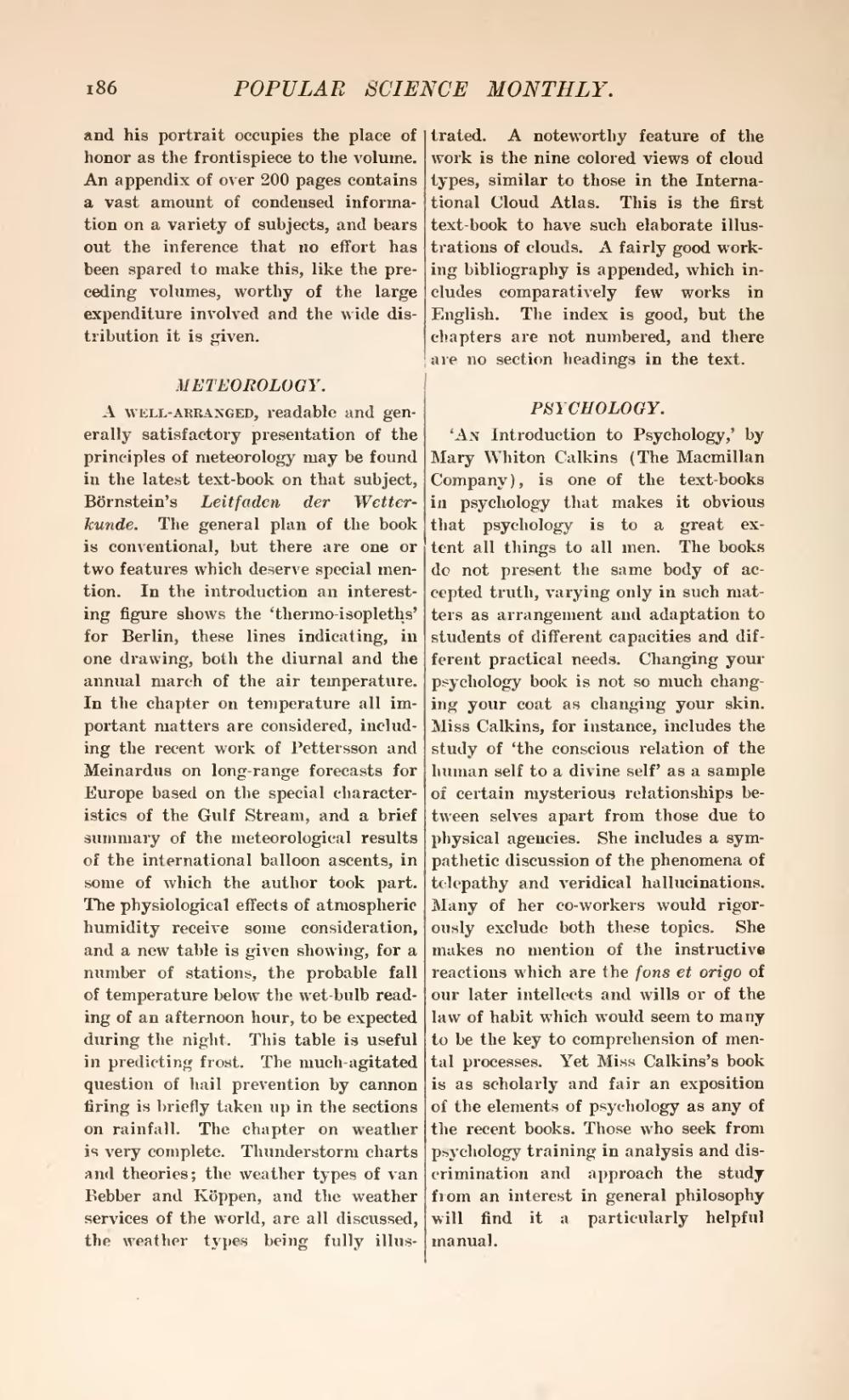and his portrait occupies the place of honor as the frontispiece to the volume. An appendix of over 200 pages contains a vast amount of condensed information on a variety of subjects, and bears out the inference that no effort has been spared to make this, like the preceding volumes, worthy of the large expenditure involved and the wide distribution it is given.
METEOROLOGY.
A well-arranged, readable and generally satisfactory presentation of the principles of meteorology may be found in the latest text-book on that subject, Börnstein's Leitfaden der Wetterkunde. The general plan of the book is conventional, but there are one or two features which deserve special mention. In the introduction an interesting figure shows the 'thermo-isopleths' for Berlin, these lines indicating, in one drawing, both the diurnal and the annual march of the air temperature. In the chapter on temperature all important matters are considered, including the recent work of Pettersson and Meinardus on long-range forecasts for Europe based on the special characteristics of the Gulf Stream, and a brief summary of the meteorological results of the international balloon ascents, in some of which the author took part. The physiological effects of atmospheric humidity receive some consideration, and a new table is given showing, for a number of stations, the probable fall of temperature below the wet-bulb reading of an afternoon hour, to be expected during the night. This table is useful in predicting frost. The much-agitated question of hail prevention by cannon firing is briefly taken up in the sections on rainfall. The chapter on weather is very complete. Thunderstorm charts and theories; the weather types of van Bebber and Köppen, and the weather services of the world, are all discussed, the weather types being fully illustrated. A noteworthy feature of the work is the nine colored views of cloud types, similar to those in the International Cloud Atlas. This is the first text-book to have such elaborate illustrations of clouds. A fairly good working bibliography is appended, which includes comparatively few works in English. The index is good, but the chapters are not numbered, and there are no section headings in the text.
PSYCHOLOGY.
'An Introduction to Psychology,' by Mary Whiton Calkins (The Macmillan Company), is one of the text-books in psychology that makes it obvious that psychology is to a great extent all things to all men. The books do not present the same body of accepted truth, varying only in such matters as arrangement and adaptation to students of different capacities and different practical needs. Changing your psychology book is not so much changing your coat as changing your skin. Miss Calkins, for instance, includes the study of 'the conscious relation of the human self to a divine self as a sample of certain mysterious relationships between selves apart from those due to physical agencies. She includes a sympathetic discussion of the phenomena of telepathy and veridical hallucinations. Many of her co-workers would rigorously exclude both these topics. She makes no mention of the instructive reactions which are the fons et origo of our later intellects and wills or of the law of habit which would seem to many to be the key to comprehension of mental processes. Yet Miss Calkins's book is as scholarly and fair an exposition of the elements of psychology as any of the recent books. Those who seek from psychology training in analysis and discrimination and approach the study from an interest in general philosophy will find it a particularly helpful manual.
